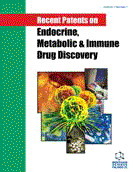Abstract
Serum amyloid A (SAA) and its protein family are highly conserved acute phase proteins elevated to high levels during acute inflammation. Among the many different roles SAA plays, one of the major ones is believed to be the regulation of mechanisms designed to fight injuries, heal infections and bring about their resolution to homeostasis. In the circulation, SAA is mainly associated with high density lipoproteins, can influence cholesterol transport and has been implicated in the pathogenesis of atherosclerosis, rheumatoid arthritis, and cancer. The deposition of SAA cleavage products can lead to amyloidosis. So, patents describing possible modifications of SAA pathophysiological role/s are relevant. SAA is one of the highest positively responsive acute phase proteins in humans, as well as in animals, and its levels have been used to monitor diseases, treatment strategies and predict outcomes. The major aims of this overview were to determine the potential for SAA as a diagnostic tool (in terms of SAA secretion as a cause or consequence of disease) and to critically analyse patents proposing SAA measurement methodologies, in order to determine the most optimal. A compilement of SAA patents predominantly generated within the past decade will also enable a better understanding of SAA, its genetics, the expression of its isoforms, associations with other proteins, especially its receptors, which could be important in diagnosis and/or treatment of chronic inflammatory diseases.
Keywords: Acute phase response, homeostasis, inflammation, receptors, serum amyloid A, TLR-2
 10
10





















